You may have noticed from this website’s Patreon ‘benefits’ that we’re not big on paywalls. We’re therefore very excited to see that John Spellar MP wants to change the law so that England’s home Test matches would become ‘protected’ sports events and consequently broadcast on free-to-air TV. It’s a shame the current government won’t allow that.
For all the good it’ll do (none), Spellar’s bill will be “considered” in March.
Speaking to the Press Association, he explained: “The big international games should be free-to-air, should be available for everyone, because we want those to encourage people, and particularly youngsters, to participate in sport, and also as part of national cohesion of supporting.”

Despite the clunky wording, those sentiments are very hard to disagree with. However, a spokesperson for the Department for Culture, Media and Sport said there were no plans to change the current list of protected events. “We believe the current list strikes an appropriate balance, with protections in place for highlights of cricket Test Matches played in England…”
There you go, all you people who can’t afford a sports TV subscription. That’s that. You’re already catered for quite well enough. If you want to watch sport live, simply hold on until the FA Cup final or the Grand National.
Highlights are good, of course – thanks for the highlights – but they’re not actually what they purport to be. A highlights show isn’t the best of the day’s play, because the best and most vital aspect of sport is watching it unfold, not knowing which way the match is going to turn next.
Sure, you can bunker down and try and Likely Lads it – and good luck with that in this day and age – but that’s an artificial thing. When you’re watching the game play out that evening – or rather watching some of it play out – you can’t help but be aware that there’s an editorial layer between you and what happened. What are they choosing to show you here and what’s hidden?
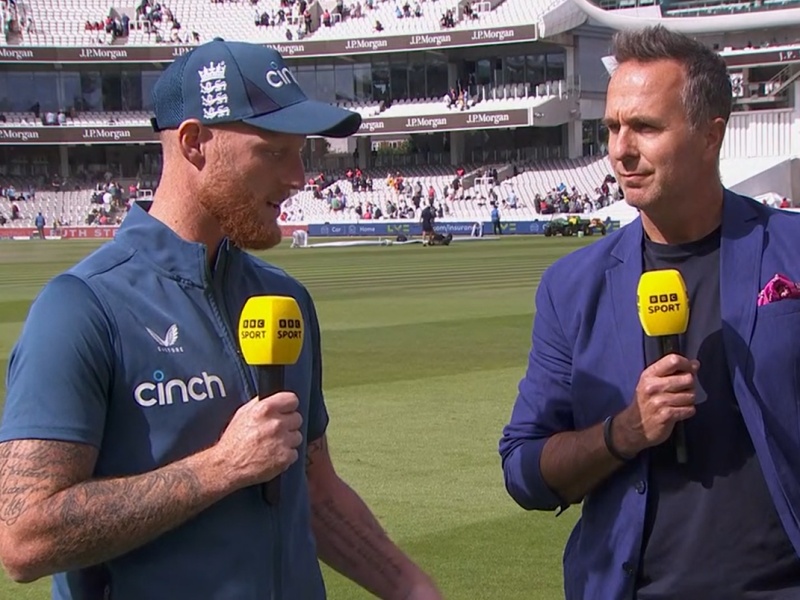
Highlights aren’t even sport really; they’re entertainment. They’re a depiction of sporting events, shorn of the uncertainty and therefore also the drama. There’s much to enjoy, but you don’t get that holy-hell-are-you-watching-this quality that can make sport feel so immediate and vital.
An LBW that breaks a comfortable partnership is a 1.21 gigawatt bolt of lightning out of a clear blue sky when you’re watching a match live, and every bit as electrifyng. Conversely, on the highlights, that same wicket won’t really feel like much at all, because wickets are, um, highlights, so you’re primed to think there’s always one on the way.
All these plot twists that move you – the sixes out of nowhere, the slowly unfurled partnership that almost imperceptibly tows the game in a barely believable new direction – these things cannot really be perceived within the confines of a 60-minute ‘best of’ show.
These are the things that make sport. These moments and our emotional reactions to them are what develop our infatuation with what is, after all, just a game. The mystery inherent in watching a live game unfold is such a fundamental aspect of following sport – but these days you have to pay for it.
Postscript – there are a lot more ways to follow Test cricket these days
We started this website in January 2006, which was pretty much exactly the moment when live Test cricket departed free-to-air TV. We have therefore written about this subject often – full articles, narky paragraphs, a sentence here, a jaded allusion there.
It’s certainly not unimportant. We still feel sufficiently strongly to have written about it again, but we’d also conceded that viewing habits – no, not viewing habits exactly – cricket-following habits have changed and continue to change.
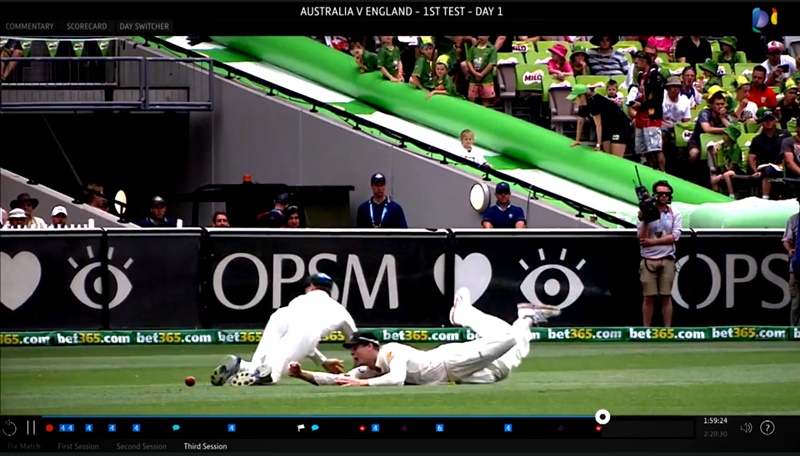
The modern experience is not just about being on the receiving end of a TV broadcast. It’s shaped by online scorecards, radio, ball-by-ball reporting, highlights snippets and social media. This isn’t really a substitute for watching a match live, but it picks up a good deal of the slack and some people will combine several of those elements to create something that works better for them.
You can read more on this in our piece about the ‘Test cricket doesn’t fit into modern life’ fallacy, which asks whether Test cricket is dying because it’s unsuited to modern life, or whether it’s being allowed to die because it’s harder to monetise.

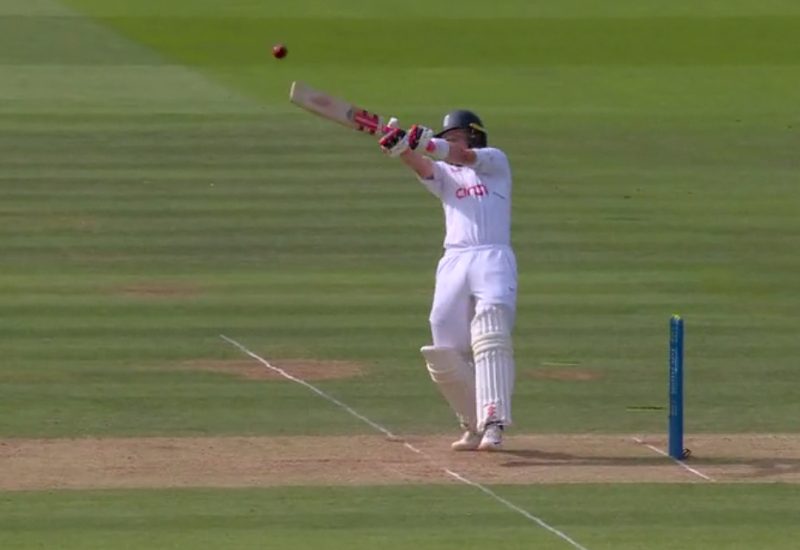


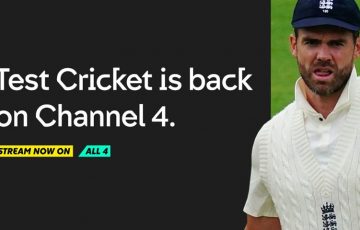
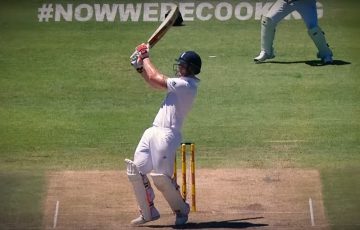
Yes, we have coined the verb ‘to Likely Lads’.
I Likely Lads
You Likely Lads
He Likely Lads
She Likely Lads
We Likely Lads
They Likely Lads
Past tense? Tricky. Probably go with Likely Ladsed.
My parents absolutely loved Whatever Happened To The Likely Lads – our household had “an appointment to view” that show. I am therefore pretty confident that a little ten-year-old me watched the “no hiding place” episode when it was first broadcast in 1973.
The story is etched in my memory. As I got a bit older, I do recall trying to Likely Lads the day’s cricket ahead of watching the highlights, which was relatively easy to do back then.
Don’t like the past tense as Likely Ladsed, though.
I was Likely Ladsing
I am Likely Ladsing
I will Likely Lads
I tried to Likely Lads
Agree with all you say about the benefits of free to air live c/w free to air highlights. But of course there is a money angle and the game has to find a balance between financial benefits and open access benefits. At the moment, I fear we have imbalance in that regard.
Like it or not, broadcasting rights money has helped bring about change. Televised BBC coverage was pretty “quaint” and the noisy upstart Channel 4 started to bring big improvements when they won the rights. Sky’s cricket commentary is some of the best sports coverage worldwide (willow and stumpy aside). Without the international money, it’s hard to see how the county game could have survived. I’m also not convinced the terrestrial broadcasters want to clear their schedules for a day at a time.
A compromise might be interesting. One test match per summer on free to air or what about offering day 5 rights if a match goes that distance? As you point out, the “consideration” of John Spellar’s idea is going precisely nowhere.
In terms of getting the kids to watch – and that is the way that I developed my interest in the game – sadly free-to-air TV is not so valuable as a marketing tool these days. The amount of TV-watching time among under-18s, even under-30s, is well down. Given the sort of screens they’ve migrated to watching, is it really likely they’ll be watching the cricket on those device because “there’s nothing else on” the 3 or 4 other channels, like it was in the summers of my youth when there was no other screen in the house?
I may be wrong. Perhaps cricket really is shooting itself in the foot now just as badly as it managed to back in the mid-noughties. I can see a case for making one Test of the summer free-to-air, even just as a taster to tempt people to buy subscriptions for the rest (the first Test of the main series? hate to suggest it, but as an “event”, maybe the Lord’s Test?) but making all the Tests free-to-air seems positively wasteful – these days it’s unimaginable that BBC2 or Channel 4 would free up that much of their schedule, so a lot of it would surely be being streamed straight to some digital player rather than a “TV broadcast”, anyway. To be fair, back in the day, we didn’t exactly get uninterrupted coverage either. But we did sometimes get county cricket, even live albeit bitty coverage of first-class matches shown on daytime ITV – also unimaginable today.
If I am wrong, though, it’s only a question of timing. Even in the very not-so-distant future, there are some really big questions about changes to technology and viewing habits – and I’ve not seen anyone even attempt to answer what that means for the cultural transmission of the sport in the long term. Harking back to “show it on TV like the good old days, so the kids will watch” is rapidly becoming an irrelevance to that. (In fact I think “so cash-strapped adults can watch” is also a perfectly legitimate argument for free-to-air, but “so the kids will watch” is the one that gets heard more often, presumably because it makes it sound like it’s an appeal to the long-term strategic sense of the game’s administrators rather than simply asking for free stuff.) We are heading into a world where families spend increasingly less time having shared viewing experiences and, even more drastically than the multichannel explosion that came with digital or earlier satellite/cable TV, kids have essentially infinite viewing options. More hours of content coming available in any 24 hour period than any human being could watch in their lifespan.
Live sport will always have a premium value to broadcasters in this kind of environment, because it is “an event” that people will tune in to watch collectively, at a time when this is getting far rarer. The situation for highlights is more ambiguous, as Yer Maj rightly point out. If you look at TV viewing figures for the country’s biggest TV shows, they have dropped through the floor compared to the 1980s or 1990s, despite a substantially larger population. You can’t assume that kids in the playground have even a remotely similar media diet to each other, and there’s pretty much nothing left that “everybody watches” anymore. Millions of kids bored over the summer holidays will have watched a bit of cricket when it was free-to-air, but the chance of people accidentally stumbling into something (and lack of choice forcing you to stick with it until eventually the bizarre rituals start making a bit of sense) is much reduced as people find content by either actively seeking it out, or having choices guided by an algorithm. If your family isn’t into cricket and you don’t play cricket at school, how are the young supposed to fall into exposure with cricket in a post-TV world? They’re far more likely to end up watching Minecraft tutorials, or whatever the next craze is.
The good news about this kind of media environment is that it can sustain a lot of niches, that would struggle to take centre-stage in the mainstream public attention. But the down side is it gets harder to break out of those niches. (You don’t see Minecraft shows broadcast on regular TV, do you? Despite viewing figures much larger than many iconic TV shows have fallen to now.) As much as I like the idea of more free-to-air cricket, and would agree the drawbridge got drawn up too quickly on that front in a way that squandered much of the legacy of 2005’s cultural impact, I can understand the logic of administrators thinking the best way to preserve cricket as part of the fabric of the national culture is to get more young people playing it. And if that means funding a lot of community programmes from the pockets of TV subscribers, then so be it.
Realistically, the biggest beneficiaries of bringing back free-to-air Tests would be cricket-enjoying retired people. They could either watch for the first time in years or, if they’d paid for a subscription, could cancel it. Most working people are too busy to tune in for hours of day-time action – the radio or live text, on the other hand, does fit in very nicely, another point Yer Maj has made well before. And the kids mostly wouldn’t tune in anyway. I’m not saying this to poke fun at the pensions by the way, those would be genuine gains. If you were to do a cost/benefit analysis of how such a change affects the general public then letting pensioners reconnect with the game would be a big plus. But if you’re first and foremost thinking of how to sustain the sport, in a way that makes professional cricket commercially viable and allows the funding of community initiatives, then there are costs to free-to-air too, and it’s only fair to acknowledge that.
The thing that really gnaws at me is that we know very few people who play youth cricket keep the sport up as adults. That’s true for all sports, in fact. So if they do engage with the game, it will mostly be as viewers or spectators. Or maybe that they’ll think it’s a good idea to drag their own kids to the local cricket club in future, so they can have a go too. But in terms of the sport’s commercial base in the long term, is the community of people who grew up playing cricket actually big enough? Is the future for cricket going to look more like (field) hockey – a big enough community to keep the game going, even (with Olympic funding help) sustaining some level of professionalism, but a niche following that rarely breaks into the national consciousness? A lot of cricket fans are people who were never any good at playing the sport, or indeed any sport. For whatever reason, they were sufficiently encultured in cricket for the sport to start making sense, and even become enjoyable as a viewing experience, rather than the weird boring alien thing so many outsiders see it as. Live free-to-air Tests were a surprisingly good way of entering the cricket culture for a non-participant. Commentators spending the time to explain things. Demonstrations in the lunch break, analysis from people who know what they’re talking about. Rarely do highlight reels serve the same purpose. But realistically, putting live Tests back on free-to-air TV won’t have the same effect on the next generation, and we are at most just a couple of decades away from the whole concept of TV as a shared national cultural medium being consigned to the nostalgia bin. And if we can’t rely on that, what can we rely on? A more fragmented, decentralised media environment where algorithms push viewers towards trending content, is going to be “winner takes most” even if it isn’t “winner takes all”, and that’s a dangerous position for a minority sport.
Not cricket’s unique problem of course, may even work in cricket’s favour in places like India! But in the UK it’s the top-level association football teams which stand to benefit most, which partly explains why they’re such lucrative property. On the other hand there are Super League clubs with under 50k Twitter followers (even Wigan who, much as I hate to write it, are one of the biggest clubs in the world, are not much over 100k) and that’s clearly a sport that’s going to struggle to bring in eyeballs or attention as televised matches drop further in importance. I don’t think things are too rosy for Rugby Union either, or even lower-league football unless they can arrange stronger redistributive arrangements from the top tier. Baseball in America is on a bad-looking trajectory for reasons not entirely dissimilar to cricket. The sporting, cultural, and media landscape is going to look very different over the lifetimes of anyone who grew up with the free-to-air cricket of the nineties or early noughties, and if we view minority sports as an important part of our cultural heritage then we need some serious solutions that don’t involve the letters “TV”.
This is barely even the beginnings of a response to that, but we’d agree with the general sentiment that free-to-air TV coverage is anything but a cure-all in the modern age – particularly with regards to capturing the attentions of the young.
That said, it is something; another route in, alongside all those mentioned in the postscript to the article. 10-year-olds probably won’t seek it out. But maybe sometimes it will be on. And maybe they will be nearby, probably doing something else. Maybe one day it will be on and they will have half an idea what’s going on and it will just be one of those days that sport gives you every few years and it will be hard for them not to notice.
For all that entertainment is bitesized and fragmented and on demand, this is our point about how sport is slightly different. The basic juice of it is still best drunk the same way: as a broadcast, as it happens.
We’re all very focused on our media consumption these days, but cricket on the telly is still capable of taking out a few bystanders.
For sure, TV’s still got some pulling power for now. Just a lot less at the kiddy end than it used to. In 20, 30, 40 years’ time, it’s not obvious it’s going to even exist in a recognisable form. But for now, free-to-air would be a something that would be better than nothing. The trickier question is whether it’s a something that’d be better than whatever development activities the TV dosh funds, and I don’t feel remotely qualified to answer that. Sadly I’m not convinced the administrators who decide such things, or the politicians who have the chance to stick an oar in too, have much of a clue either. Certainly the incentives for those decisions are messed up – is there anyone running a large organisation who wouldn’t rather be running a large organisation with hundreds of millions more pounds, and likely a bigger pay packet to match?
Thinking strategically about the game’s interest base in the population is tricky, not straightforward to equate to financial value, not easy to balance against the day-to-day pressures of keeping the millstone of18 professional teams of country cricket (plus youth, second XI, women’s regions etc) all viable, and likely to get harder in the new media landscape. But it’s not impossible. The NFL are on the “winner takes” side of the new equation, and they have a very astute development team. In particular, they’ve grasped the commercial opportunities that come from working hard at building up a pipeline of future fans. All without falling into the trap of thinking this necessarily involves getting hundreds of thousands of kids in their target expansion markets playing gridiron football. This distinction shows a certain clarity of thought about their product which might be worth borrowing from.
‘What do we want?’
‘To encourage people, and particularly youngsters, to participate in sport, and also as part of national cohesion of supporting!’
Stirring stuff. I can just imagine it booming out of the Hollies stand next summer, just before another rendition of Sweet Caroline.